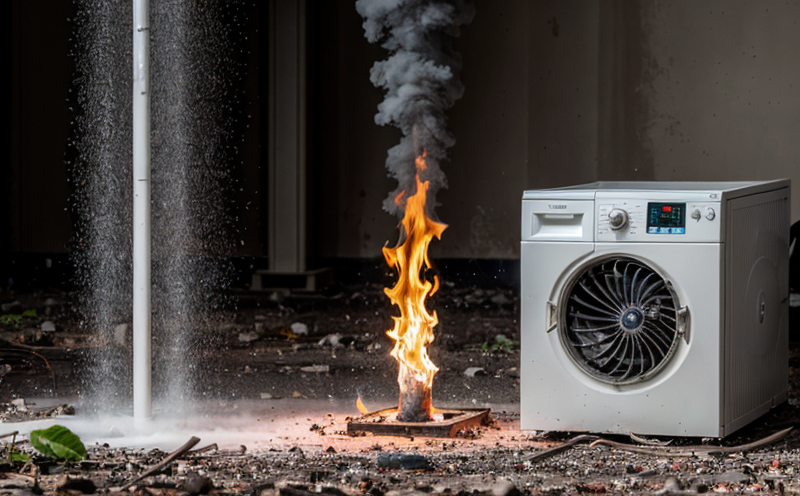IEEE 1881 Environmental Stress Testing of Stationary Battery Systems
The IEEE Standard Environmental Stress Testing of Stationary Battery Systems (IEEE 1881) provides a comprehensive framework for the testing and evaluation of stationary battery systems under various environmental stress conditions. This standard is critical in ensuring that these systems can withstand harsh operating environments, thereby enhancing reliability and performance.
Stationary battery systems are widely used across multiple sectors including renewable energy storage, uninterruptible power supplies (UPS), telecommunications, and electric vehicle infrastructure. These batteries face extreme temperature variations, humidity levels, and mechanical stresses during their operational lifecycle. IEEE 1881 addresses these challenges by specifying a standardized approach to conduct environmental stress tests that mimic real-world conditions.
The standard covers several key areas:
- Environmental Stress Conditions: Includes high-temperature, low-temperature, humidity, and altitude testing.
- Test Methods: Detailed procedures for conducting the tests are outlined. These include both cyclic and constant exposure methods to ensure thorough evaluation of battery performance under stress.
- Data Collection and Analysis: Guidelines for monitoring and recording data during the test periods, which helps in determining compliance with specified limits.
- Acceptance Criteria: Clear pass/fail criteria based on predefined performance metrics that indicate whether a system can operate reliably under environmental stress conditions.
The testing process typically involves preparing the battery specimen according to specific guidelines provided in IEEE 1881. This includes charging and discharging protocols, initial conditioning steps, and ensuring all components are properly interfaced before testing begins. Once prepared, batteries undergo a series of environmental stress cycles designed to simulate actual usage scenarios.
During these tests, various parameters such as voltage, current, temperature, internal resistance, and specific energy must be continuously monitored using specialized instrumentation. The data collected is then analyzed against the acceptance criteria outlined in IEEE 1881 to determine if the battery system meets performance expectations under stress conditions.
Compliance with IEEE 1881 ensures that stationary batteries are robust enough to operate efficiently and safely even when exposed to extreme environmental factors. This not only enhances product reliability but also contributes significantly towards sustainability goals by reducing waste and improving energy efficiency in various applications.
In summary, IEEE 1881 provides a structured methodology for assessing the resilience of stationary battery systems against environmental stresses. By adhering to this standard, manufacturers can produce more reliable products that meet stringent quality standards set forth by industry leaders like IEEE.
Applied Standards
In addition to IEEE 1881, several other international and regional standards may be applicable depending on the specific requirements of your project or region. Some key standards include:
- IEC 62619: Covers energy storage systems for stationary applications.
- ASTM G173: Specifies a standard test method for determining the resistance to water penetration of photovoltaic modules and related assemblies.
- EN 50600: Provides requirements for distributed generation systems connected to low voltage networks.
These standards complement IEEE 1881 by providing additional guidance on aspects such as durability, safety measures, and performance criteria. When choosing a testing partner, it is important to ensure they are familiar with all relevant standards applicable to your project to guarantee comprehensive compliance.
Environmental and Sustainability Contributions
The implementation of IEEE 1881 plays a crucial role in promoting environmental sustainability by ensuring that stationary battery systems can operate efficiently under challenging conditions without compromising safety or performance. Here are some ways this contributes:
- Eco-Friendly Design: By testing batteries for their ability to withstand harsh environments, manufacturers can design products that have longer lifecycles and require fewer replacements.
- Resource Efficiency: Reliable batteries reduce the need for frequent replacements, conserving raw materials and reducing manufacturing waste.
- Pollution Reduction: More durable batteries mean less frequent disposal, which helps in minimizing landfill contributions from electronic waste.
- Energy Conservation: Ensuring reliable performance under all conditions optimizes energy usage, leading to more efficient operations across multiple industries.
Moreover, adherence to these standards fosters innovation within the industry by encouraging development of advanced technologies aimed at enhancing battery longevity and resilience. As a result, stakeholders benefit from improved product quality while contributing positively towards environmental conservation efforts.
Use Cases and Application Examples
The IEEE 1881 standard finds application in numerous sectors where reliable stationary battery systems are essential for maintaining operations during adverse conditions. Here are some specific use cases:
- Renewable Energy: Solar farms and wind turbines often need backup power solutions that can operate efficiently even when environmental factors like extreme temperatures or high humidity affect performance.
- Data Centers: UPS systems powered by stationary batteries ensure continuous operation during power outages, critical for maintaining data integrity.
- Hospitals: Emergency generators equipped with reliable battery systems provide essential support to medical facilities when regular electricity supply is interrupted.
- Telecommunications: Base stations rely on dependable backup power sources to maintain connectivity in remote areas where infrastructure may be vulnerable to natural disasters.
These examples illustrate how IEEE 1881 supports critical infrastructure by providing robust solutions that can function effectively under varied environmental stress conditions. Implementing this standard ensures that batteries used in such applications meet stringent performance requirements, thereby enhancing overall system reliability and resilience.





